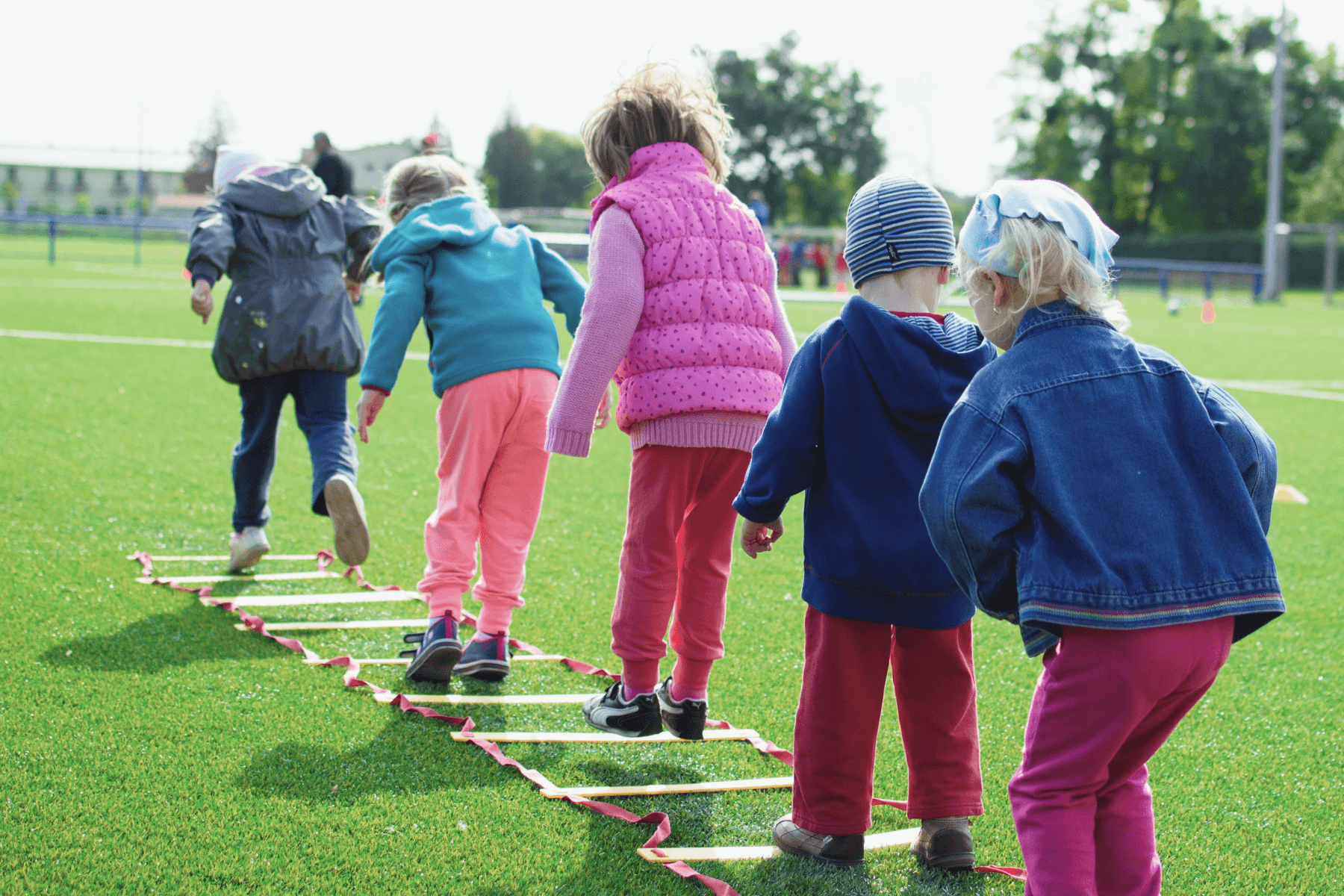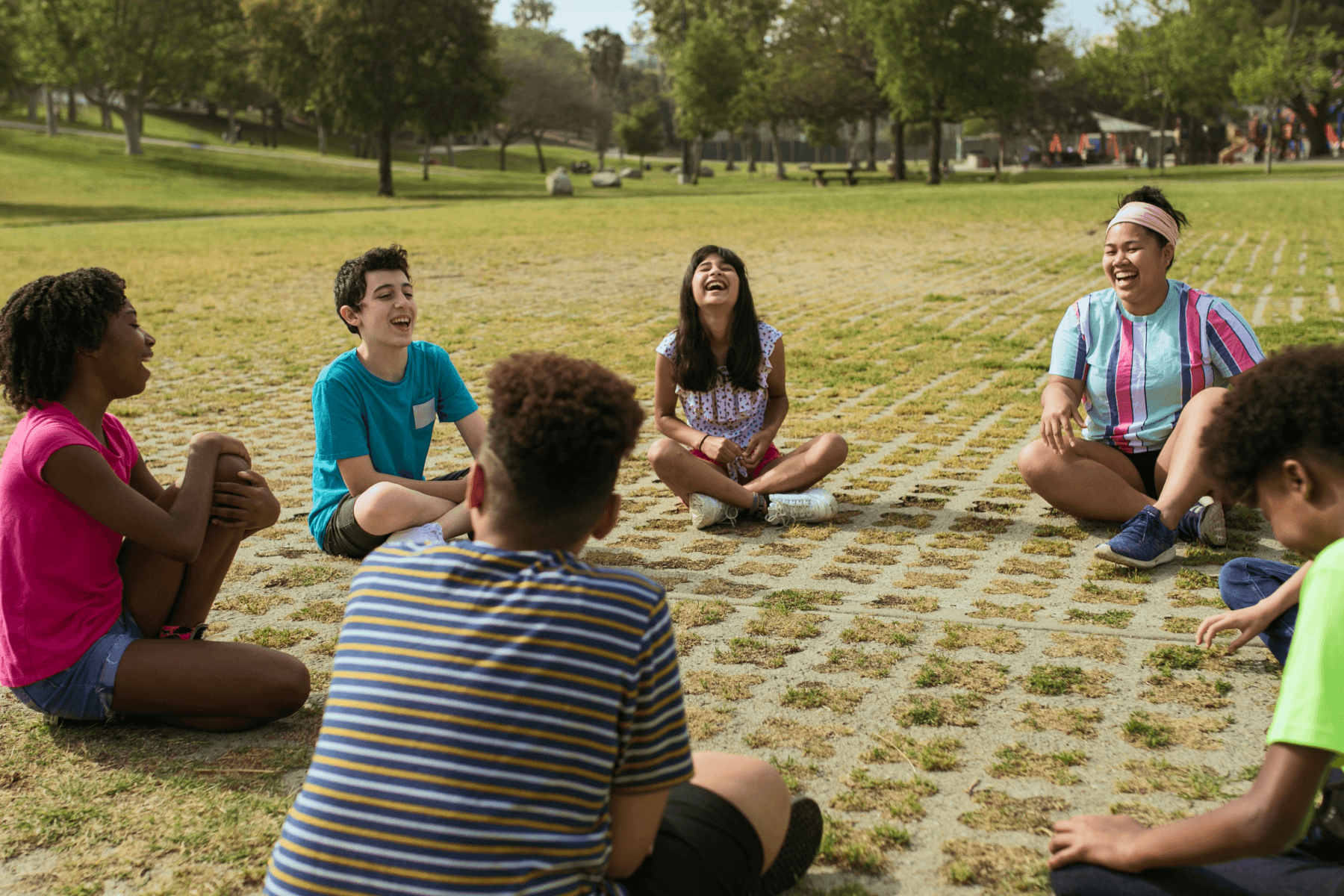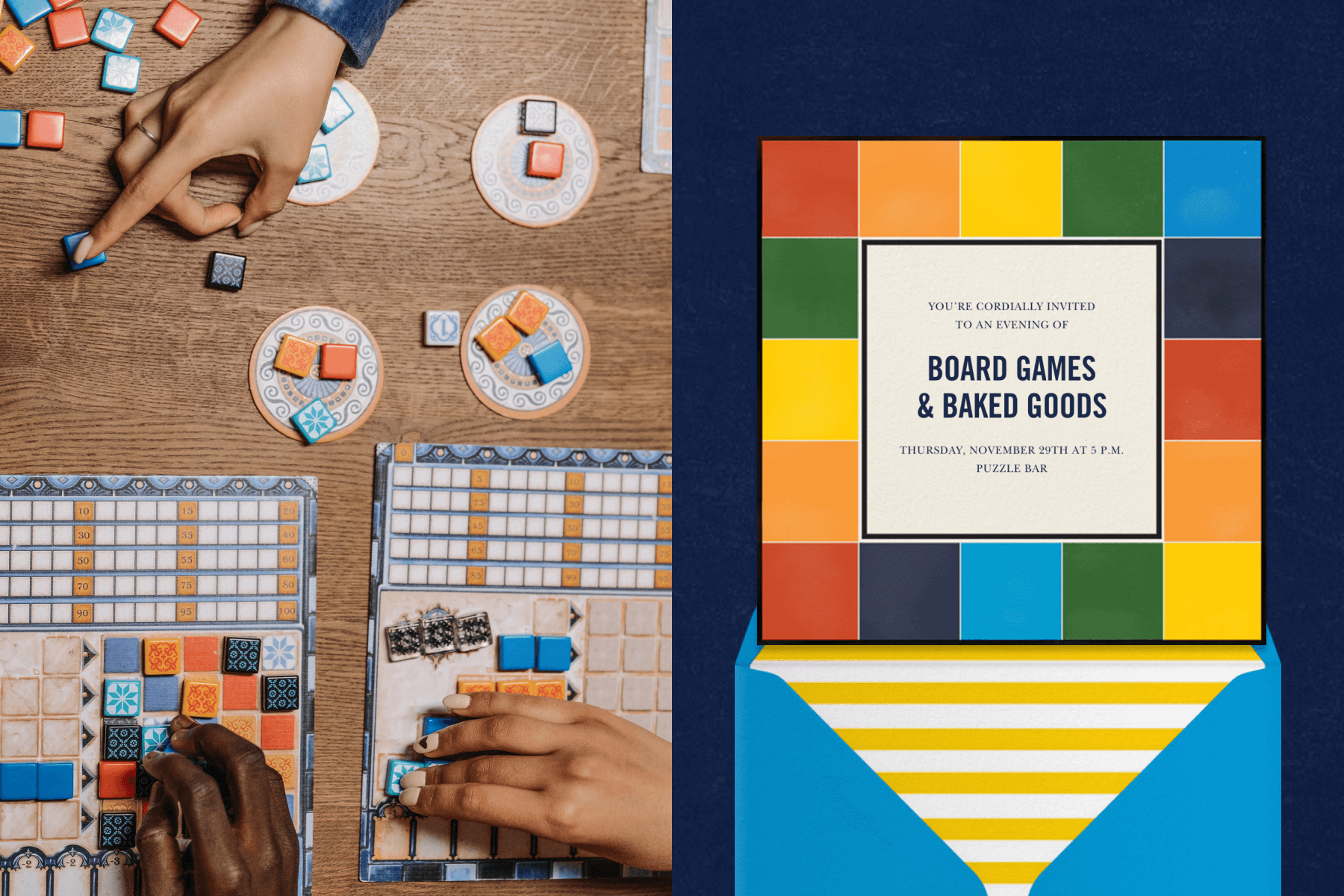18 effective community building activities for students of all ages

Do you have a vibrant and diverse group of students, and want to help them build trust and empathy for each other? Community building activities can do just that—they encourage people to understand each other, to appreciate different customs and cultures, and to develop the skills they need to communicate effectively.
The right activity to build community in your classroom or school depends on a few considerations. For example, it’s important to ensure the activity or student event is appropriate for the age of your students, whether they’re in kindergarten or college. Some other points to consider include:
- Ability of students: Choose an activity young people of all abilities can participate in.
- Comfort level: Include a variety of roles for different personalities and comfort levels.
- Risk or safety level: Assess the kind of participation your activity requires. Low risk means no physical contact, not physically difficult, simple steps. Medium risk entails more physical activity, requires moderate physical reliance on others, takes place outside, and has a higher level of sharing. High risk includes lots of physical activity (like a sport), that takes place outside of the classroom or school grounds
- Budget: If your activity requires props, tools, or travel, you may need a budget to obtain them.
With your considerations and goals in mind, you can find a number of fun, silly, or challenging activities that build community among students. Here, we’ve compiled a list of activities shown to build community among different age groups. You’ll find an engaging and motivating community building activity that’s right for your students, your budget, and your school.
Table of Contents
Community building activities for elementary school students
These activities can help children in elementary grades improve their listening and communication skills and build bonds with their peers. They’re age-appropriate and are an excellent starting point for fostering respect and trust in elementary school students.
1. Get-to-know-you bags
Help kids begin breaking down barriers by sharing a little bit about themselves in a clever way. Give each student a piece of paper, and have them write a “get to know you” question like:
- What’s your favorite color?
- Where in the world would you like to go?
- Do you have a pet?
Have students fold the paper and place it inside a plastic sealable bag. If you have colorful shredded paper or tissue paper, students can fill their bags with it before sealing it shut.
Gather all students together, and direct them to throw the bags in the air to form a pile in the center of the room. Have everyone grab one bag and sit in a circle. One by one, each student opens a bag and answers the question inside.
- Age range: kindergarten to 2nd grade
- Props: paper, pencils, plastic bags, festive filler paper (optional)
- Risk level: low
2. Thank you wall or shout-out activity
Teach students how to recognize kindness and observe the good things their classmates do with this activity.
Set aside a section of your classroom wall as a space for students to write or draw thank you notes to their peers throughout the week. Once a week, you can read the notes that students wrote for their classmates.
Alternatively, you can have a “shout-out” activity at the end of the week for kids to offer their thanks to others or to acknowledge a cool or nice thing they saw someone else do.
- Age range: kindergarten to 2nd grade
- Props: paper, pens or pencils, tape
- Risk level: low
3. Railroad tracks
Get the wiggles out while helping students discover what they have in common with their classmates—all in one purposeful community-building activity.
Arrange two ropes parallel to each other on the ground, simulating a railroad track. Have students line up in the center of the track. Explain that you will call out a pair of opposites like:
- Salty or sweet
- Hot or cold
- Wet or dry
Ask students to jump over the left rope if they like the first thing more. Ask students to jump over the right rope if they like the second thing more.
Review the students’ choices before they step back to the center of the railroad track for the next question. You can vary the questions to fit topics that align with your students’ interests.
- Age range: kindergarten to 2nd grade
- Props: two long pieces of string or rope
- Risk level: medium

4. Spider web activity
This activity demonstrates that everyone is interconnected, and our stories can bridge the differences between us.
Have students sit in a circle. Give a ball of string to one student, and ask them to share a funny anecdote or a joke. When they’re done, they should hold the end of the string and roll the ball to another student, who then shares their own funny story and rolls the ball to another student while holding the string.
Continue until everyone has shared a story, then observe and discuss the interconnected web they created with the string.
- Age range: 3rd grade to 5th grade
- Props: ball of yarn
- Risk level: medium
5. Sneak peek
This community-building game helps develop problem-solving skills and pushes students to communicate as effectively as possible.
Before the activity, build a small structure out of building blocks, and place it somewhere in the classroom. Cover it up so students can’t see it. Divide your class into small teams of four or five people, and provide each team with enough blocks to create the same construction you made earlier.
The game begins when you uncover the construction and allow one member of each team to observe it up close for 15 seconds. Then, cover it back up, let each person return to their team, and ask them to give their team members instructions on how to build the structure.
After one minute, a different team member can approach the original construction, observe it for 15 seconds, and return to their team to give more instructions. This continues until one of the teams flawlessly recreates the structure.
- Age range: 3rd grade to 5th grade
- Props: blocks (LEGO or similar)
- Risk level: low
6. Straw challenge
Improve cooperation among your students with this small physical challenge that requires coordination and patience.
Have students stand in a circle, and give each a straw. Ask them to hold their straw in their right hand and cross their arms in front of them in an X—the straws should be pointing toward their left shoulders.
Now, challenge them to balance the straw between their own right pointer finger and the left pointer finger of the person to their left. The goal is for everyone to balance the straws.
You can add additional challenges, like standing on one foot or sitting down collectively.
- Age range: 4th grade and 5th grade
- Props: straws
- Risk level: medium
Community building activities for middle school students
Middle school students benefit greatly from classroom community activities—they become quicker at solving problems together and showing mutual respect. Middle school activities can focus on more complex tasks and may involve higher risk.
7. Group greetings
A lot of classroom learning takes place in small groups, and intentional greetings help break the ice among peers and give them a growing sense of comfort with each other. Whenever you break your students up into groups, instruct them to begin their learning session with some kind of physical group greeting. This can be:
- High-fives
- Fist bumps
- Coordinated finger snapping
If groups stay the same for any length of time, encourage members to create their own “secret handshake” they can perform at the beginning of their group work—they can even add a new move each time they meet.
- Age range: 6th grade to 8th grade
- Props: none
- Risk level: low

8. Sheet flip challenge
Motivate your students to work together with this community activity that builds collaboration and creative thinking skills.
Lay a large bed sheet down flat on the floor. Split the class into teams of around five students. In turn, have each team stand on top of the sheet and flip it over—without stepping off of it.
- Age range: 6th grade to 8th grade
- Props: large bed sheet or blanket
- Risk level: medium
9. Common ground game
This game is a fun icebreaker to help students find consensus about what they have in common. Divide your classroom into teams of three to six students, and give teams five minutes to discuss their interests and identify three things they have in common, such as:
- Their favorite holiday
- Their least favorite food
- The number of siblings they have
- The type of pet they have
Then, have one player from each team announce their findings. Shuffle the teams, and do it again—continue for the duration of time you’ve set aside for the activity.
- Age range: 6th grade to 8th grade
- Props: none
- Risk level: low
10. Pretzel, unpretzel
This activity relies on verbal cues from teammates and requires students to use their observations to solve this game quickly and creatively. This is also a fun challenge to hold at a school carnival or back-to-school event.
Divide your class into two groups. Each group should choose one or two people to be the “pretzel makers” and two other people to be “unpretzelers.” Ask the rest of the students in each group to hold hands in a circle.
Tell the unpretzelers to turn away or close their eyes. Then, have the pretzel makers direct their team—with words only—to form a human pretzel without breaking the circle by:
- Ducking under each other
- Stepping over each other
- Turning left or right
Once the pretzel is fully formed, have the unpretzelers untangle their team, again using only words to tell them what to do. The first team to untangle completely wins.
- Age range: 6th grade to 8th grade
- Props: none
- Risk level: high
Community building activities for high school students
Building a sense of community among high schoolers is especially important—honing their communication, collaboration, and teamwork skills will help them navigate college and professional experiences with confidence and strong interpersonal skills.
11. Find someone who…
This activity is a scavenger hunt of sorts that gets the whole group interacting one-on-one. Provide students with a bingo-style card you’ve prepared ahead of time, and have them mingle about the room to find someone who matches the criteria in the boxes, such as:
- Has traveled outside of the country
- Has a pet that isn’t a cat or a dog
- Is an only child
- Has a vinyl record collection
Set a timer, and when you say, “go,” have the students talk to as many of their peers as they can to find people who meet a criteria and collect their signatures in the appropriate box. Students can only sign one box per card, even if they meet more than one criteria. Play until someone gets a BINGO—or until someone fills their entire card with signatures.
- Age range: 9th grade to 12th grade
- Props: Bingo sheets and pens
- Risk level: high
12. Community service
A big part of community building is recognizing how far your community stretches—and contributing to it in a positive way.
Performing community service helps students recognize needs in their community, build empathy, and discover their own abilities to actively make a difference. Service activities help build confidence and self-worth.
Depending on your resources, plan an event like:
- Community clean-up day where students meet to pick up trash at a local park or on campus
- Volunteering at a local food bank
- Walking dogs at an animal shelter
- Organizing a food and clothing drive
- A fundraiser event for a local charity or non-profit organization
Some activities take more planning than others and may require release forms or transportation. More complex community service projects may be better for older students in 11th and 12th grade, and older students can help take on the planning of the event.
- Age range: 9th grade to 12th grade
- Props: none
- Risk level: high
13. Back-to-back drawing
This activity helps students become more aware of their own communication skills as well as how other people interpret things. It’s a great way to help students identify differences in perspective.
Divide students into partners, and direct each pair to sit back-to-back. Pass out a simple photo or drawing to one person in each pair, and provide the other with paper and a pen. Ask the first person to describe their photo to their partner, who will draw it based on their partner’s descriptions.
After a few minutes, have the pairs switch roles, and provide a new photo for the next round.
- Age range: 9th grade to 12th grade
- Props: photos or images, paper, drawing instruments
- Risk level: low
14. Class movie
Team building activities can be ongoing. A semester- or even year-long project that involves everyone in some capacity is a great way to unify your class and help them recognize the different strengths everyone brings.
As a group, decide on a plot for a class movie. Have students decide who will work on different elements of the movie, including script writing, acting, music/sound effects, costumes, and editing. Then, set a timeline for deliverables.
Allow students to participate in a way where they feel empowered to use their interests and skills to help create a great film. Hold a viewing party for the film near the last day of school, and invite parents or other classes—send customizable Cards or Flyers to invite guests to the event.
- Age range: 11th grade and 12th grade
- Props: phone or recording device, costumes and props based on the script, video editing software
- Risk level: high

Community building activities for college and university students
College is unlike any other academic experience for students. They’re likely entering into a more diverse community of people who come from all over the country—and the world. Collaborative activities for college students can help them step out of their comfort zone and open up to the people around them.
15. Board game party
College events like this pull students away from their digital devices and into a night of fun challenges with their peers. Casual, competitive events allow students to break the ice and start to identify those who share similar interests—or a similar sense of competition.
Ask students to bring a favorite game, or collect and bring a variety of games for them to choose from. Hold the game party outside on a nice day, or plan a meet-up at a local cafe that has the space.
- Age range: college students—especially first-year students
- Props: assorted games
- Risk level: low

16. Two truths and a lie
This game is popular for all ages but works extremely well at the college level because students have a little more life experience to draw from. They also get to put their storytelling and acting skills to the test.
Ask everyone to come up with three facts about themselves—except one of the “facts” needs to be fabricated. One by one, have participants share their three “facts,” and ask the others to guess which one is the lie.
- Age range: college students or employees at an organization
- Props: none
- Risk level: low
17. Mystery bag skit
If you want older students to become more comfortable with their group or community, a performance-based game like this one is a good way to break the ice and bridge gaps.
Put together bags containing several random objects like:
- Gum
- A glue stick
- Sunglasses
- A tennis ball
Divide students into small groups, pass a bag to each group, and give them 10 to 15 minutes to come up with a skit that uses all of the items as props.
Make it a challenge—the funniest skit or the one that best uses the props wins the game.
- Age range: college students or employees at an organization
- Props: assorted items, bags
- Risk level: medium
18. Ball and bucket challenge
This activity requires some physical coordination—and a lot of effective communication. It’s a great way for students to have fun and connect with others.
Divide your students into groups of four or five. Line up buckets in a row for each team, and place a ball in the first bucket. Each team then has to devise ways to move the ball from bucket to bucket without using their arms or hands—or letting the ball fall out and touch the ground.
- Age range: college students or employees at an organization
- Props: tennis or ping pong balls, 3–5 buckets (of different sizes) per group
- Risk level: medium
How to plan your next community building event
Collaborative activities are beneficial in the classroom and beyond. Find the best location for your community-building activity—in addition to the classroom, you can hold them at planned student events like back-to-school nights or school fairs to inspire everyone to work together and get to know each other.
Empowering students to build a better community has immediate importance. It helps them build healthy interpersonal skills and a collaborative mindset that will serve them no matter where they go in life.
Searching for invitations that inspire community building? Find exactly what you’re looking for at Paperless Post.
Browse school event invitations
